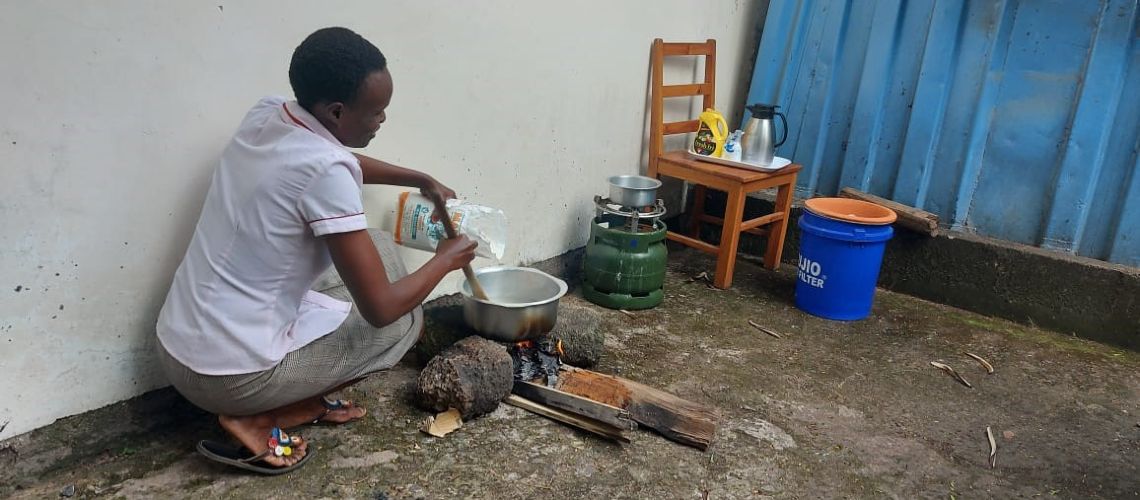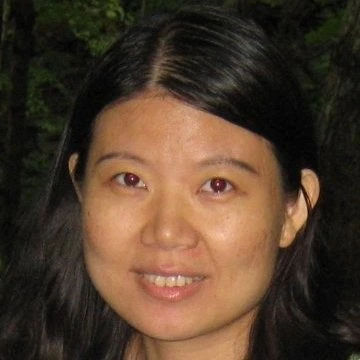 A woman in Western Kenya using a stack of three-stone fire, gas and electric kettle in her meal preparation.
A woman in Western Kenya using a stack of three-stone fire, gas and electric kettle in her meal preparation.
As cooking in developing countries evolves along the energy ladder with increased income, it rarely switches completely from one fuel to another. Rather, households experience cookstove and fuel ‘stacking’, a phenomenon of using multiple stove-and-fuel cooking combinations within the same household. Just as our own kitchens may include a gas range, an electric microwave, a convection oven, and a water heater, households that adopt modern cooking technology in developing countries often retain multiple cooking options.
The dynamics of user adoption and preferences are at the heart of efforts to increase access to modern cooking services and mitigate the impacts of pollution from traditional cooking.
According to the World Bank recently published the State of Access to Modern Energy Cooking Services report, over four billion people still lack access to efficient, clean, convenient, safe, affordable, and reliable methods of cooking. About 2.8 billion people still rely on traditional polluting fuels and technologies as their primary cooking method, costing the world more than $2.4 trillion each year, driven by adverse impacts on health ($1.4 trillion), climate ($0.2 trillion), and women ($0.8 trillion from lost productivity). Achieving universal access to modern cooking by 2030 is a key component of Sustainable Development Goal (SDG) 7, and the lack of progress not only risks jeopardizing that goal, but also inhibits progress towards related SDGs.
Solutions to tackle this pressing development challenge must prioritize user preferences and local cooking contexts to address longstanding barriers to the adoption of modern cooking solutions. Understanding why and how families want to stack multiple cooking devices will play a key role for policy makers in deciding how to promote the cooking solutions that will be fully adopted. This is particularly important now as the world recovers and rebuilds from the COVID-19 pandemic and clean cooking as an essential service should be a critical part of the pandemic response.
Why do people stack?
Our recently published study, Household perspectives on cooksstove and fuel stacking: A qualitative study in urban and rural Kenya, delivers new insight on the topic. The study finds that while newly adopted cookstoves displace some of the functions performed by traditional stoves, those traditional stoves are rarely abandoned, primarily because they provide extra burners and allow for simultaneous cooking. Participants expressed the difficulty and time expenditure of relying on a single stove (i.e., one burner), and how adopting new cookstoves helped to overcome that burden.
“I cannot use one stove for all my cooking, it just can't work. I have to prepare meals in time for my school-going children who need to do their homework after supper and sleep early. My past experience of using only one (burner) stove was very stressful and I would not go back to it” – Participant with 2-burner cookstove.
“--- even in the past when I only had a three stone stove, I would put another set of three stones, otherwise my children would sleep hungry. Even now I have an improved stove but when am in a rush I light the three-stone stove or jiko (charcoal stove)” – Participant stacking multiple stoves.
Among the narratives of 71 participants in the study, time savings from simultaneous cooking was the most prevalent reason for stacking stoves. Other motivations, such as preference for certain food tastes, were less important drivers. As a result, many participants who had adopted two-burner biomass stove solutions reported they had “no need to stack”.
The other main motivation for stacking was the need to accommodate large pot sizes for warming water or preparing large meals. Energy dense dishes like githeri (a mixture of dried maize and beans) are typically prepared in bulk as a fuel saving measure, and this requires large pots that cannot be accommodated by the modern cookstoves currently in the market. Households therefore resort to traditional cookstoves.
Addressing stacking in clean cooking programs
The study reveals that stacking, at least in the study context, is mainly due to technical or design deficiencies that limit the practical utility of modern cookstoves, rather than a cultural attachment to traditional methods.
Designing a cookstove that responds to variations in individual tastes and preferences would be challenging. However, general design solutions can be developed to address the practical requirements identified. For example, cooking solutions could come with multiple burners. Adjustable pot rests could be added to stoves to accommodate large-size pots. High-efficiency cooking appliances such as electric pressure cookers could address the need for fast cooking and the need for bulk cooking of grains to save energy. By better understanding household stacking behavior, clean cooking programs can be designed in such a way to promote user-centered innovations and solutions for better and more sustainable adoption.
Going forward
It is clear that cookstove and fuel stacking is the norm, rather than the exception. Using data from different contexts can elucidate what drives stacking in various regions and improve our understanding of stacking behavior. ESMAP’s Multi-Tier Framework (MTF) surveys provide national data-sets that include cookstove and fuel stacking information, allowing researchers to dig deeper into the reasoning behind household cooking choices. A clearer picture of household energy use can in turn drive innovation in product research and development to better fit consumer cooking needs, and can also inform better clean cooking programs to accelerate progress toward achieving SDG7 on universal access.
To learn more about assessing stacking behavior using MTF data, please see our report on The State of Access to Modern Energy Cooking Services.
Subscribe here to stay up to date with the latest Energy blogs.



Join the Conversation